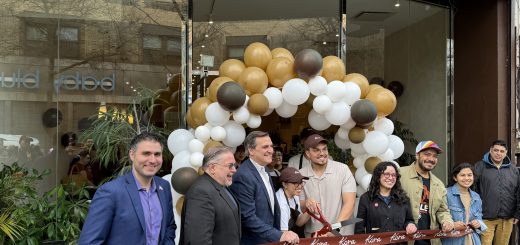Passover Memorabilia Lighting The Way Uniting The Past & Present with Passover Collectibles
Views: 416
By Michael Perlman
Passover is among the most celebrated Jewish holidays, which consists of eight days often in April or in late March, based on the Jewish calendar. The holiday marks the time when G-D rescued Jewish people from captivity in Egypt.
This columnist preserves a Passover collection, and has been sharing it on social media for a decade. Besides the admiration of design and craftsmanship, a story unfolds, where historical awareness and an understanding of traditions is essential.
Passover, a contraction of “pass over” is known in Hebrew as Pesach, which translates as “jump.” Passover begins with two Seders (translation for “order”) and consists of ritual meals on the first two nights, where the miraculous story of the Exodus is told, symbolic foods are eaten, and four cups of wine are consumed. Kosher For Passover matzah (such as the popular Streit’s) or shmurah matzah is known as unleavened bread, which Jews in Egypt were historically commanded to eat. A tray with three covered matzahs is also symbolic. Songs performed at the Seder and throughout the holiday include “Ma Nishtana,” “Avadim Hayinu,” “Baruch Hamakom,” “Dayenu,” “Eliyahu Hanavi,” “Echad Mi Yodea,” “Chad Gadya,” “Im Ein Ani Li,” “I Am The Afikomen,” and “Seder Table.”
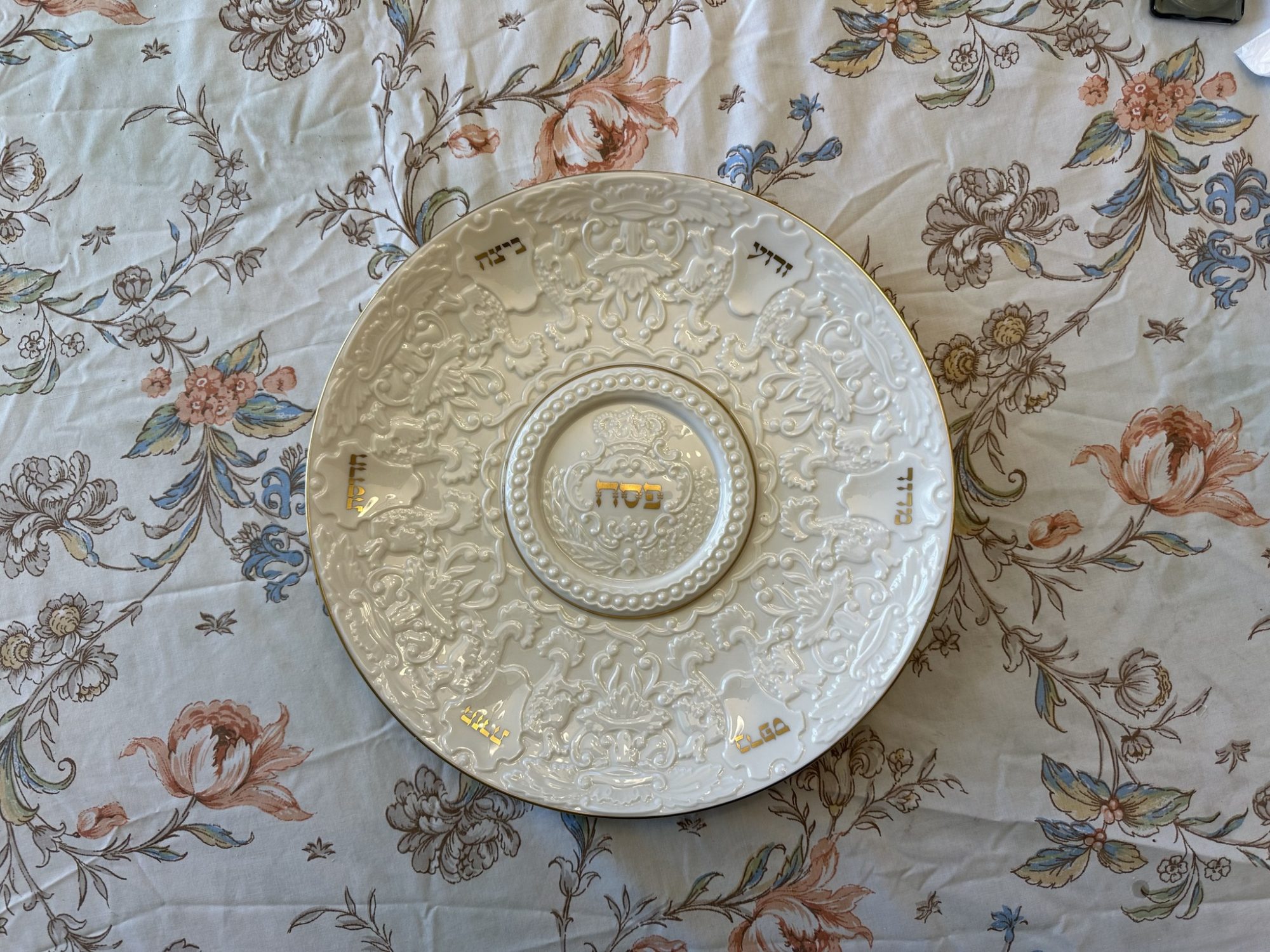
The Seder Plate by Lenox, replica of a 19th century plate in The Jewish Museum, Photo by Michael Perlman
A prized collectible is titled “The Seder Plate,” which shimmers in its gold inscription on the back. It then states, “Adapted by Lenox from a Nineteenth Century Plate in the collection of The Jewish Museum New York.” This ivory Lenox China model, produced around 1973, and stamped “Made In U.S.A.” The 13-inch in diameter Seder plate, trimmed in 24-karat gold, is ornate, elegant, and meant to leave a lasting impression. Symbolic foods, also named in gold Hebrew inscriptions, read zeroa (shank bone to symbolize paschal lamb), beitzah (egg that represents presented each day of the festival during the Temple’s existence in Jerusalem), maror (bitter herbs to recall bondage), karpas (greens, often parsley to symbolize spring), charoseth (sweet paste with apples, nuts, ginger, and grape juice/wine to represent mortar), and hazeret (sharp green vegetable). As for the latter, it is commonly substituted with a potato to dip in saltwater. Collectively, they represent the Jewish people’s transition from slavery to freedom.
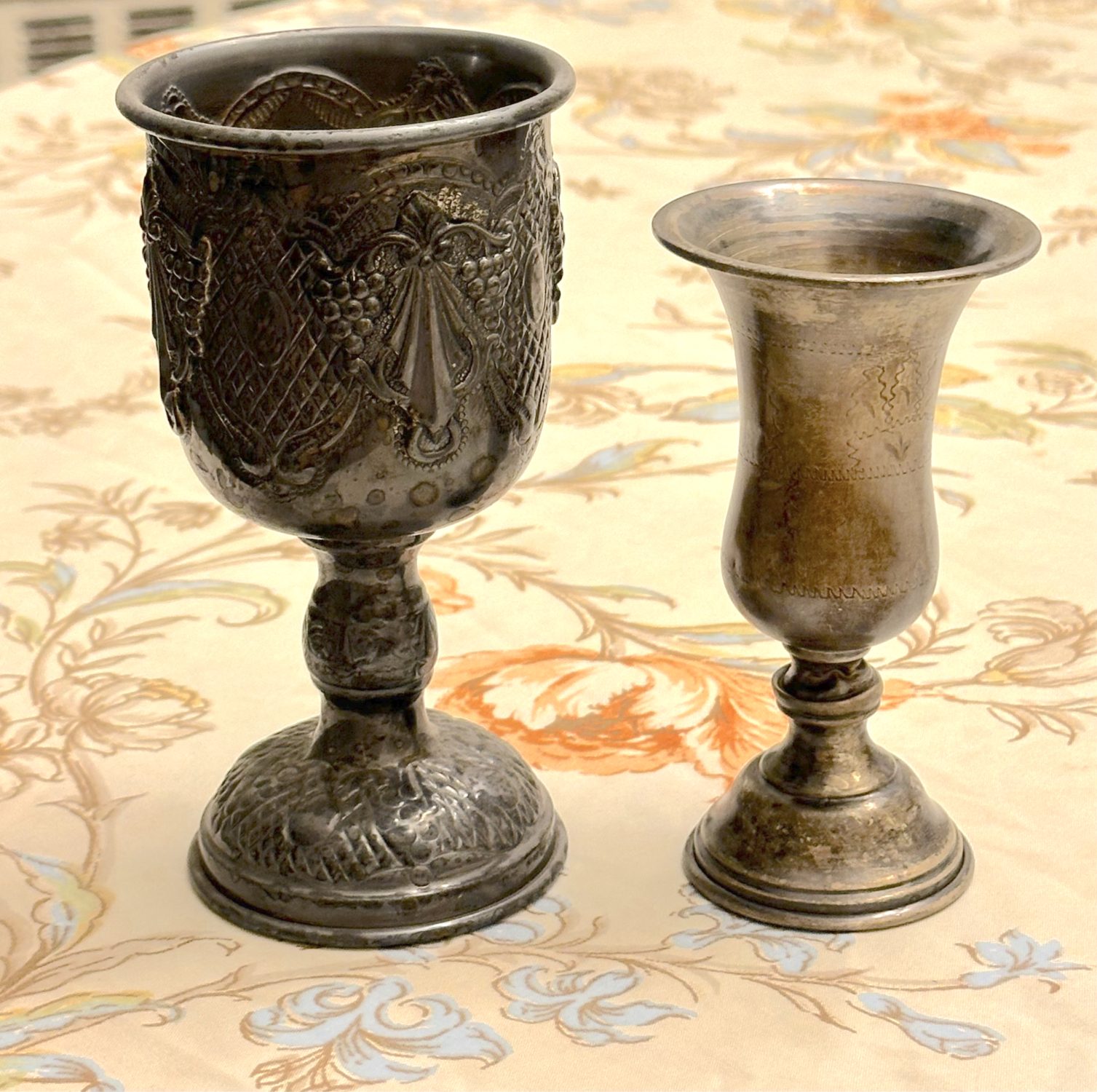
Kiddish cups, photo by Michael Perlman
The four cups of wine are reminiscent of Moses being sent by G-D to deliver the Israelites from Egypt and represent four categories of redemption from Pharaoh. A Kiddush cup is filled with wine and is reserved for Hebrew prophet Elijah, who visits observant families. Kiddush cups are often ornate works of Jewish art.
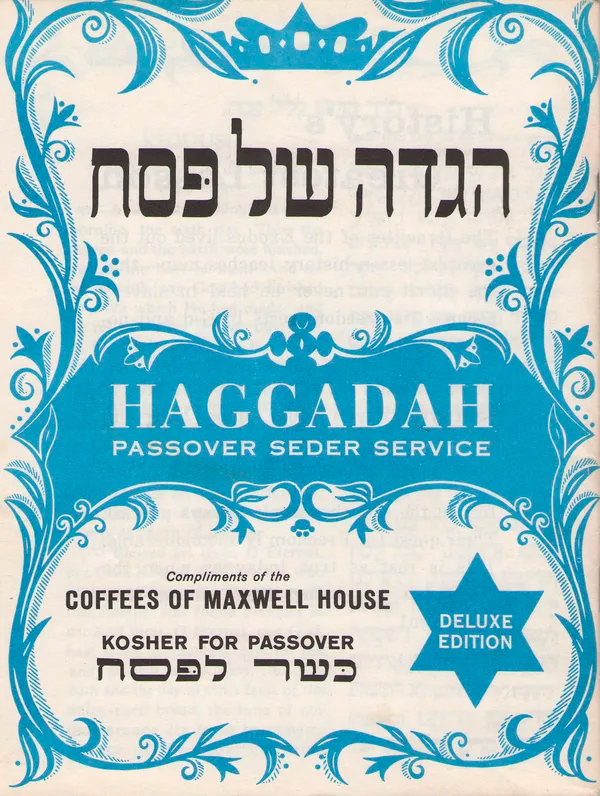
A 1950’s Passover Haggadah by Maxwell House
The Maxwell House Passover Haggadah, which tells the Passover story, complete with prayer, and songs, has long been a staple in Jewish homes, and most recently published the 90th Anniversary Edition. Traditionally, Jewish grocers would only distribute tea for observant patrons. Maxwell House Coffee, with its slogan “Good to the last drop,” originated in 1923 in NYC under ownership of the Cheek Neal Coffee Co. of Nashville, Tennessee. That year, Maxwell House would secure the first Kosher For Passover certification for coffee, which enticed palates nationwide.
The anniversary edition, which features past artistic covers, reads, “In 1932, Maxwell House Coffee, then owned by the General Foods Corporation, produced the first Maxwell House Passover Haggadah. Since then, the demand for this Haggadah has increased steadily. Maxwell House Coffee, now part of the Kraft Heinz Foods Company, has printed over 55 million copies of its haggadah, making it the most widely used haggadah in the world.” However, the earliest extant complete manuscript of the Haggadah dates to the 10th century. The earliest surviving Haggadot produced as works in their own right are manuscripts from the 13th and 14th centuries, such as the Golden Haggadah and Sarajevo Haggadah.
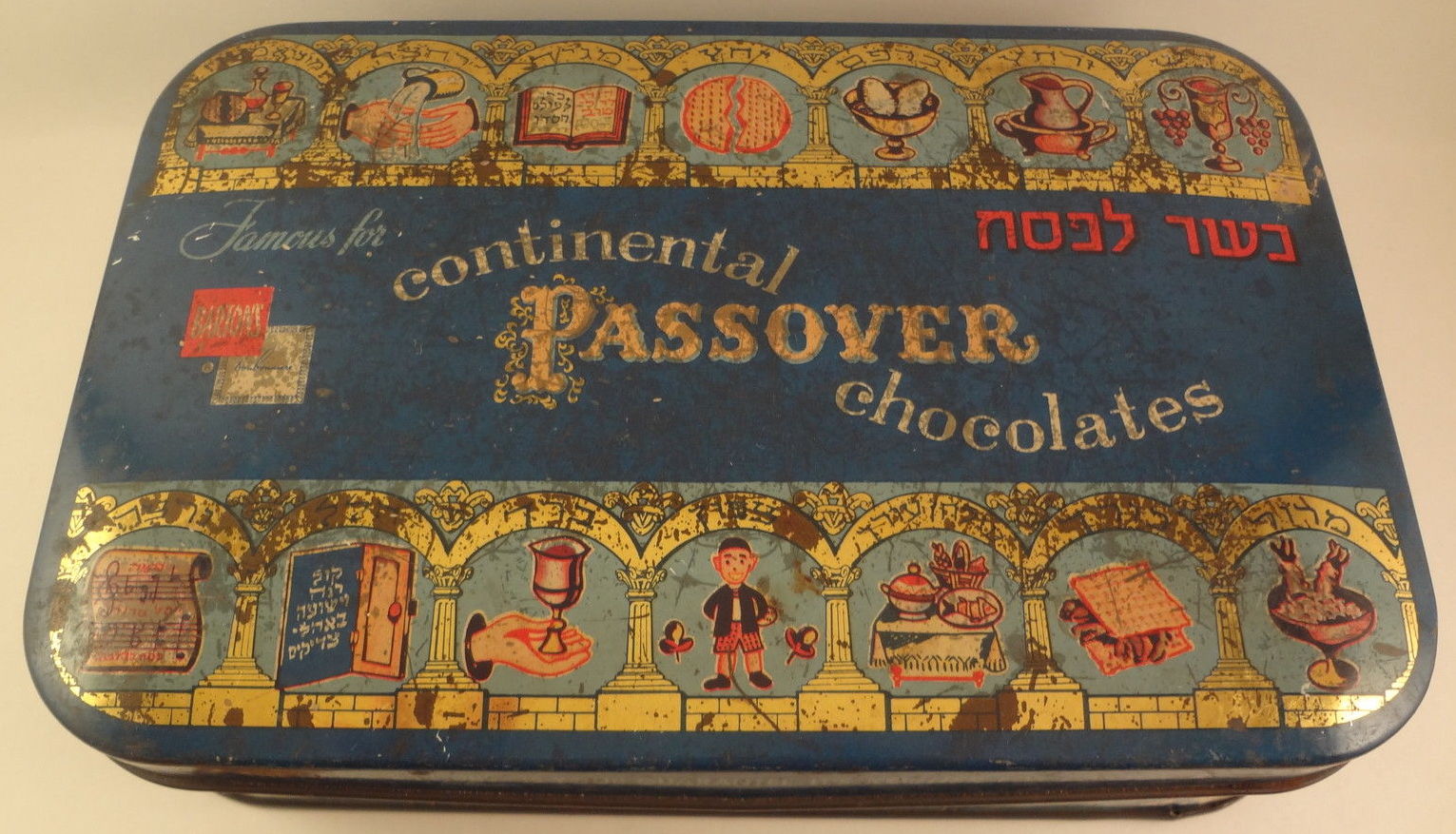
Vintage Barton’s Continental Passover Chocolates tin, photo by Michael Perlman
Some local residents have fond recollections of Barton’s Bonbonniere, a foremost candy shop chain, where goods were presented in showroom style. In 1938, Jewish chocolatier, Stephen Klein, immigrated from Austria and founded Barton’s Candy Corporation. Around 1950, Barton’s was located at 97-01 Queens Boulevard in Rego Park, followed by 97-19 Queens Boulevard around 1958. Artistic Barton’s tins attracted audiences, and today they are collectors’ items. One tin states, “Famous for continental Passover chocolates,” and chocolates at large, top off many meals. Furthermore, in April 1952, a New York Post newsbrief stated, “For what they believe to be the first time anywhere, ice cream strictly kosher for Passover is being offered by Barton’s Bonbonniere. Smoothly delicious, kosher Continental ice cream is available in the Barton stores in chocolate, chocolate mocha, coffee and vanilla flavors.” The price was 60 cents a pint.
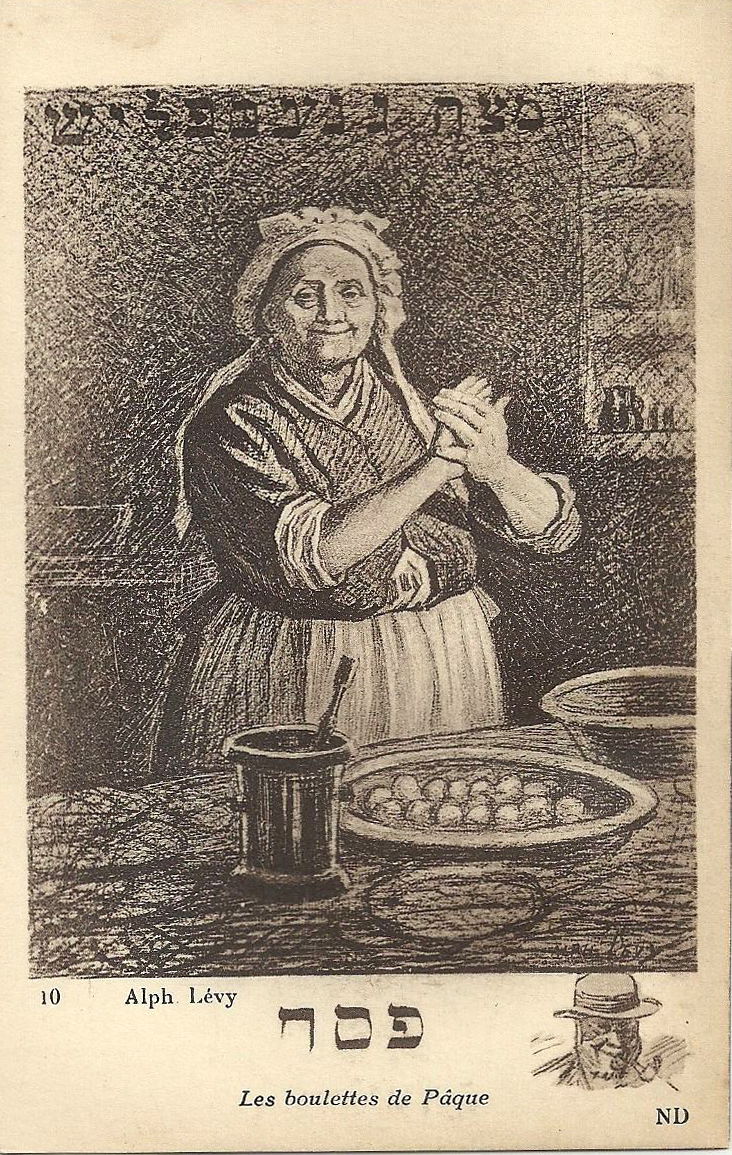
“Dumplings of Passover” by Alphonse Lévy
As a deltiologist, vintage postcards and lithographs are included in the collection. Artist Alphonse Lévy (1843 – 1918), a native of Bas-Rhin, France, was born into an Orthodox family. In his works of art, which were featured on vintage postcards, he is highly regarded for his affectionate depictions of the rural French Jewish community of Alsace, where he was raised. One postcard reads “Pesach” and features a caption that translates as “Dumplings of Passover.” A Jewish peasant woman is smiling for the occasion and rolling matzah balls/kneidel for traditional soup. In another postcard, she is approaching two young grandchildren who greet her with flowers and an embrace, as she is offering an egg and holding another. A traditional frame home captures rural livelihood. The back of his postcard series reads “Collection D’Art & D’Histoire E.S. Paris, 2 Rue Ménars.”

“The Eggs of Passover” by Alphonse Lévy
Lévy was inspired by caricaturist Honoré Daumier and Rembrandt, who often represented Jews of Amsterdam. He was drawn by majestic Jewish traditions. As of 1876, he produced lithographs that explored Alsace’s Jewish family life. A decade later, he coordinated an exhibition, “The Jewish Life.” According to the University of Chicago Library, Lévy produced his first caricatures of rural Jewish life for Léon Cahun’s “La Vie Juive,” published in 1886 as part of the Passover Preparations and Matzah section.

“Festival of Passover – The Seder” by Moritz Daniel Oppenheim
German native Moritz Daniel Oppenheim (1800 – 1882) produced an oil on canvas circa 1867, which was represented in the early 20thcentury as a postcard and titled “Fete De Paque – Le Seder.” This translates as “Festival of Passover – The Seder.” The canvas is in the possession of The Jewish Museum at 1109 Fifth Avenue. It features the beginning of the Passover Seder and is characterized by Haggadahs (book featuring the narrative of the Exodus), Hebrew prophet Elijah’s cup, a Seder plate, and cups of wine. A Kiddush was recited after the first cup was poured and the Passover story is being shared.
Oppenheim is regarded as the first Jewish painter in Germany to receive academic training. He pursued his studies in Hanau, Munich, and Paris. His works consist of 350 documented paintings, and some are in the possession of The Jewish Museum, Jerusalem’s Israel Museum, Museum Schloss Philippsruhe in his hometown of Hanau, and Jewish Museum Frankfurt. The Leo Baeck Institute references him as the first Jewish painter of the modern era, which influenced a new generation of artists to take pride in their faith and resulted in the acceptance of Jews within the European artistic community. He was courageous at a time when the Jewish population at large in Europe faced a lack of equal opportunities. His original collection, “Scenes From A Traditional Jewish Family Life” is among the most acclaimed.
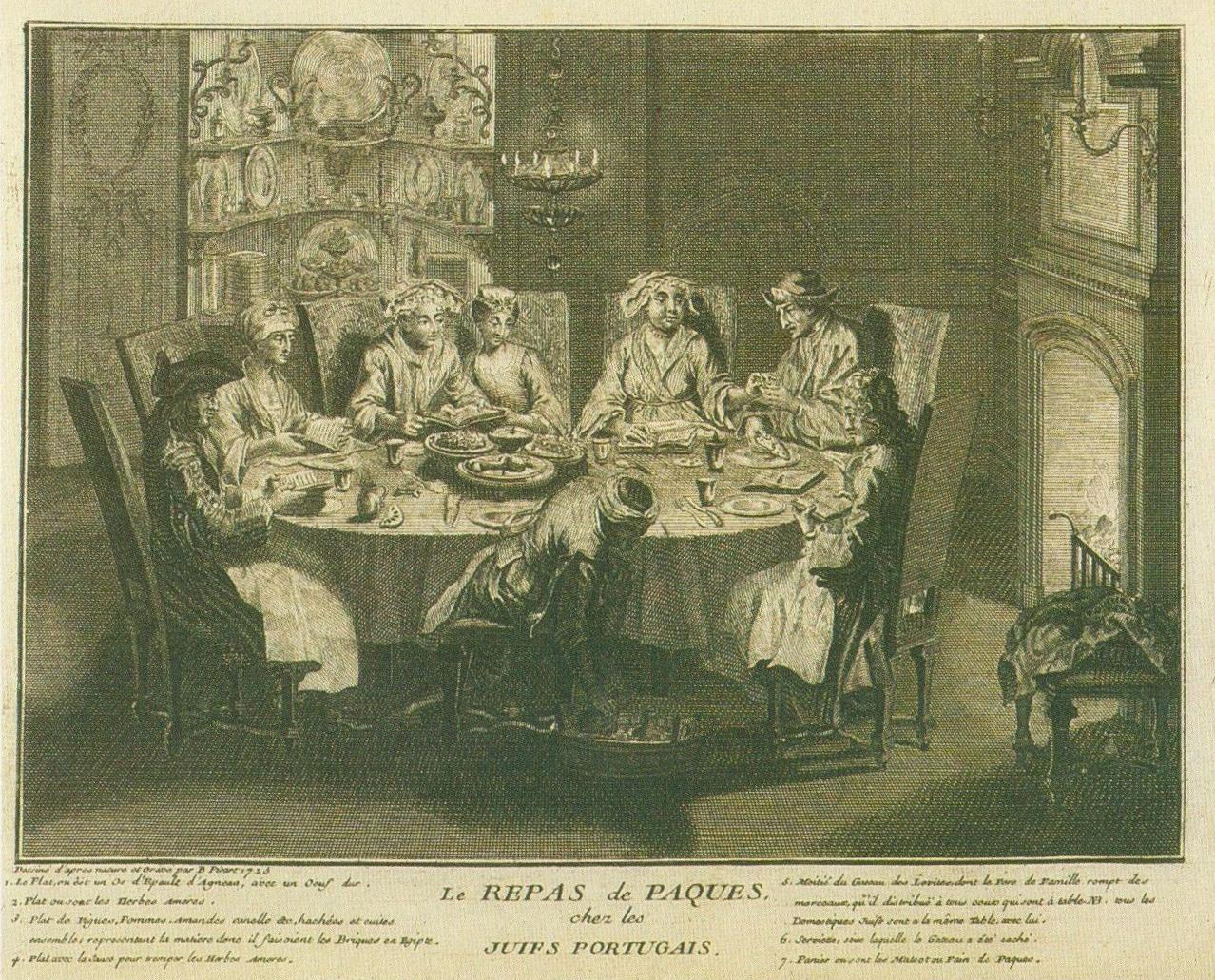
“The Feast of Passover Among the Portuguese Jews” by Bernard Picart
Bernard Picart (1673 – 1733) is remembered as a French copper engraver, book illustrator, and draughtsman, who produced works of art that captured religious and cultural traditions. He was born in Paris and passed away in Amsterdam. In the name of Judaica, he produced a copper engraving in 1725, which is present in the Jewish Historical Museum in Amsterdam and is titled “Le Repas de Paques chez les Juifs Portugals” or “The Feast of Passover Among the Portuguese Jews.” His work of art is also available as a card. The multi-line text includes the following translation: “A dish containing a shoulder bone of lamb and a hard egg” and “A dish consisting of figs, apples, almonds, mace, & c. hashed and boiled all together representing ye manner of their making bricks in Egypt.”


